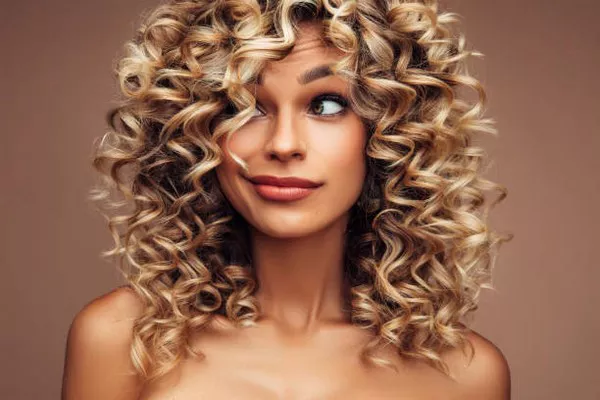Wavy fringe is a versatile and stylish choice that can enhance various hair types and face shapes. It adds texture and movement to your hairstyle, offering a relaxed yet polished look. In this guide, we’ll explore different methods to achieve wavy fringe, including styling tips, product recommendations, and maintenance strategies.
Understanding Wavy Fringe
Definition and Characteristics
Wavy fringe refers to a fringe (or bangs) that has a natural, soft wave to it. Unlike straight fringes, wavy fringes incorporate subtle curls or waves, giving the hair more body and dimension. This style works well with different hair lengths and can be adapted to suit various face shapes.
Benefits of Wavy Fringe
Versatility: Wavy fringe can be styled in multiple ways, from tousled beach waves to more defined curls.
Face Framing: It helps in framing the face and can soften angular features.
Texture Addition: Adds texture and volume to the hair, making it look fuller and more dynamic.
Methods to Achieve Wavy Fringe
1. Using a Curling Iron
Materials Needed:
- Curling iron
- Heat protectant spray
- Hairbrush
Steps:
Prepare Your Hair: Start with clean, dry hair. Apply a heat protectant spray to prevent damage.
Section Your Hair: Divide your hair into manageable sections. Focus on the fringe area.
Curl Your Fringe: Wrap small sections of the fringe around the curling iron. Hold for a few seconds, then release.
Style the Waves: Use your fingers or a brush to gently separate the curls. For a more natural look, avoid using too much product.
Analysis:
Pros: Provides well-defined waves that last long; suitable for various hair types.
Cons: Requires frequent use of heat, which can lead to damage over time.
2. Using a Flat Iron
Materials Needed:
- Flat iron
- Heat protectant spray
- Hair clip
Steps:
Prep Your Hair: Apply a heat protectant spray. Ensure your hair is completely dry before using the flat iron.
Section the Fringe: Clip the rest of your hair away and focus on the fringe.
Create Waves: Clamp small sections of the fringe between the flat iron plates and twist the iron as you pull it through. This motion creates a wave.
Finish the Look: Run your fingers through the fringe to soften the waves.
Analysis:
Pros: Flat irons can create both soft and more pronounced waves depending on technique.
Cons: Similar to curling irons, flat irons can cause heat damage if not used properly.
3. Using Hair Rollers
Materials Needed:
- Velcro or foam rollers
- Hair mousse or setting spray
Steps:
Apply Mousse: Before rolling, apply a lightweight mousse or setting spray to damp hair.
Roll Your Hair: Section the fringe and roll it onto the rollers. Secure with clips if necessary.
Dry and Unroll: Allow the rollers to sit until your hair is completely dry, then remove them.
Style: Gently separate the curls with your fingers or a comb.
Analysis:
Pros: Less heat damage; creates more natural-looking waves.
Cons: Time-consuming; rollers need to stay in place until the hair dries.
See Also: How To Make Big Loose Curls With Flat Iron
4. Using Braids or Twists
Materials Needed:
- Hair elastics
- Leave-in conditioner or styling cream
Steps:
Apply Product: Apply a leave-in conditioner or styling cream to damp hair.
Braid or Twist: Divide the fringe into small sections and braid or twist each section.
Dry: Allow your hair to air-dry or use a hair dryer on a low heat setting.
Unravel: Once dry, carefully undo the braids or twists and separate the waves.
Analysis:
Pros: Gentle on hair; can be done overnight for convenience.
Cons: Requires planning ahead; may not provide very defined waves.
5. Texturizing Products
Materials Needed:
- Sea salt spray
- Texturizing mousse
Steps:
Apply Product: Apply sea salt spray or texturizing mousse to damp hair.
Scrunch and Dry: Scrunch the fringe with your hands and let it air dry or use a diffuser attachment on a blow dryer.
Adjust: Once dry, use your fingers to arrange the waves as desired.
Analysis:
Pros: Adds texture with minimal heat; quick and easy application.
Cons: Waves may not be as long-lasting or defined.
Tips for Maintaining Wavy Fringe
Regular Trims: Keep your fringe trimmed to maintain the desired length and shape.
Avoid Over-Styling: Minimize heat styling to prevent damage and maintain hair health.
Hydration: Use moisturizing products to keep your hair healthy and prevent dryness.
Conclusion
Wavy fringe offers a stylish, versatile option for adding texture and movement to your hair. Whether you choose to use heat styling tools, rollers, braids, or texturizing products, each method has its benefits and considerations. By following the tips and techniques outlined in this guide, you can achieve beautiful wavy fringe that complements your look.

